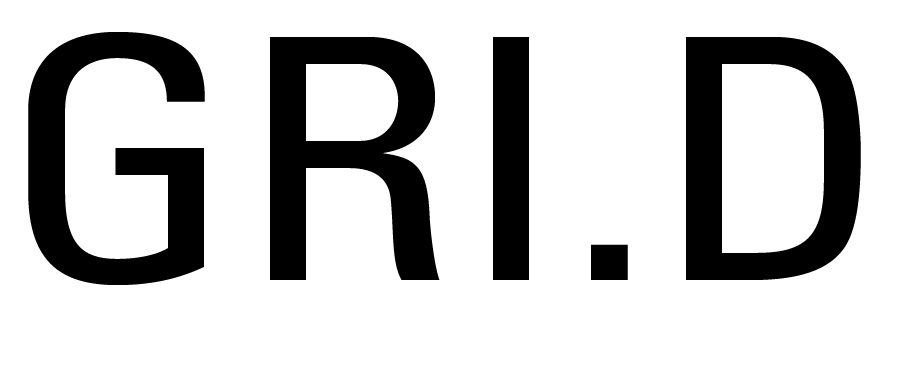Dream Lawn
Environmental Care
Atlanta Metropolitan Area, GA
Self-published Children’s Book
MIT, Options Studio: Positions/Scenarios
Instructors: Miho Mazereeuw & Rosalyne Shieh
Do we need to do so much?
“Dream Lawn” uses the medium of an illustrated children’s book to reflect on the American Dream, using a lawnmower and lists of chores as worldbuilding devices in a fantasy narrative. With suburbia as a backdrop, the book recasts lawn care as environmental care, questioning ideals of property, maintenance, and ecological succession.

Hardcover Printed Book Copy

Case Study: Yardwork

Vignettes from a List of Chores
 Cognitive Map: The Lawn from the Eyes of a Child
Following the journey of completing chores, spaces are organized by their adjacency to the continuous winding trails left by the mower. Objects, bugs, fruits, and more are scaled according to memorability rather than physical dimension, portraying the spatial experience of the lawn.
Cognitive Map: The Lawn from the Eyes of a Child
Following the journey of completing chores, spaces are organized by their adjacency to the continuous winding trails left by the mower. Objects, bugs, fruits, and more are scaled according to memorability rather than physical dimension, portraying the spatial experience of the lawn.
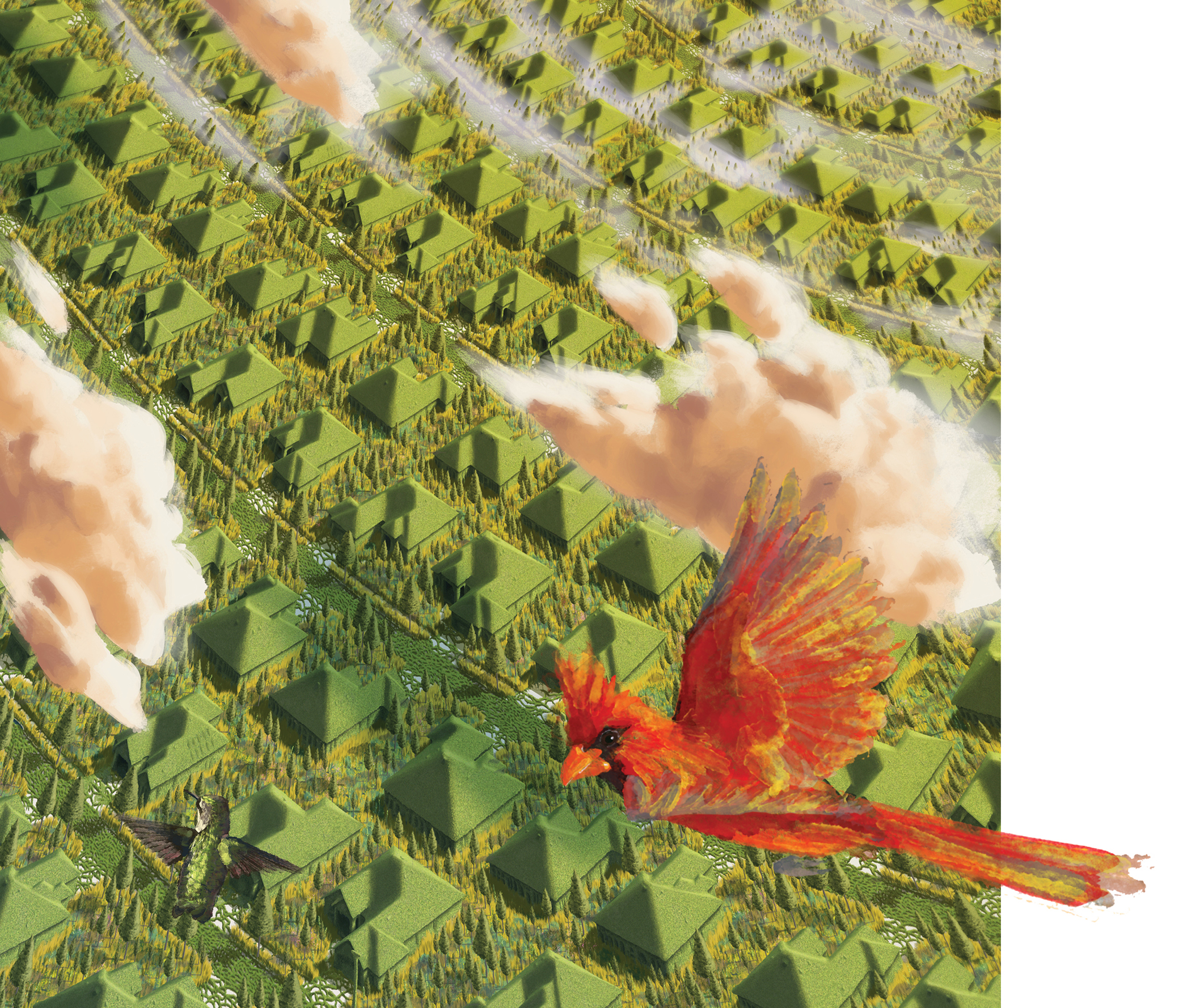 Aerial Perspective: Suburbia as one LawnWe can recognize the yard to be a microcosm of the limitations of strict single-use zoning. Our insistence on one particular type of lawn, especially a high maintenance variety, contributes to immense water use, pesticide runoff, and even atmospheric carbon from lawnmowing itself. By zooming out to the scale of suburban sprawl, we can speculate on the role of the lawn in developing and maintaining regional ecosystems, rather than maintaining superficial images.
Aerial Perspective: Suburbia as one LawnWe can recognize the yard to be a microcosm of the limitations of strict single-use zoning. Our insistence on one particular type of lawn, especially a high maintenance variety, contributes to immense water use, pesticide runoff, and even atmospheric carbon from lawnmowing itself. By zooming out to the scale of suburban sprawl, we can speculate on the role of the lawn in developing and maintaining regional ecosystems, rather than maintaining superficial images.
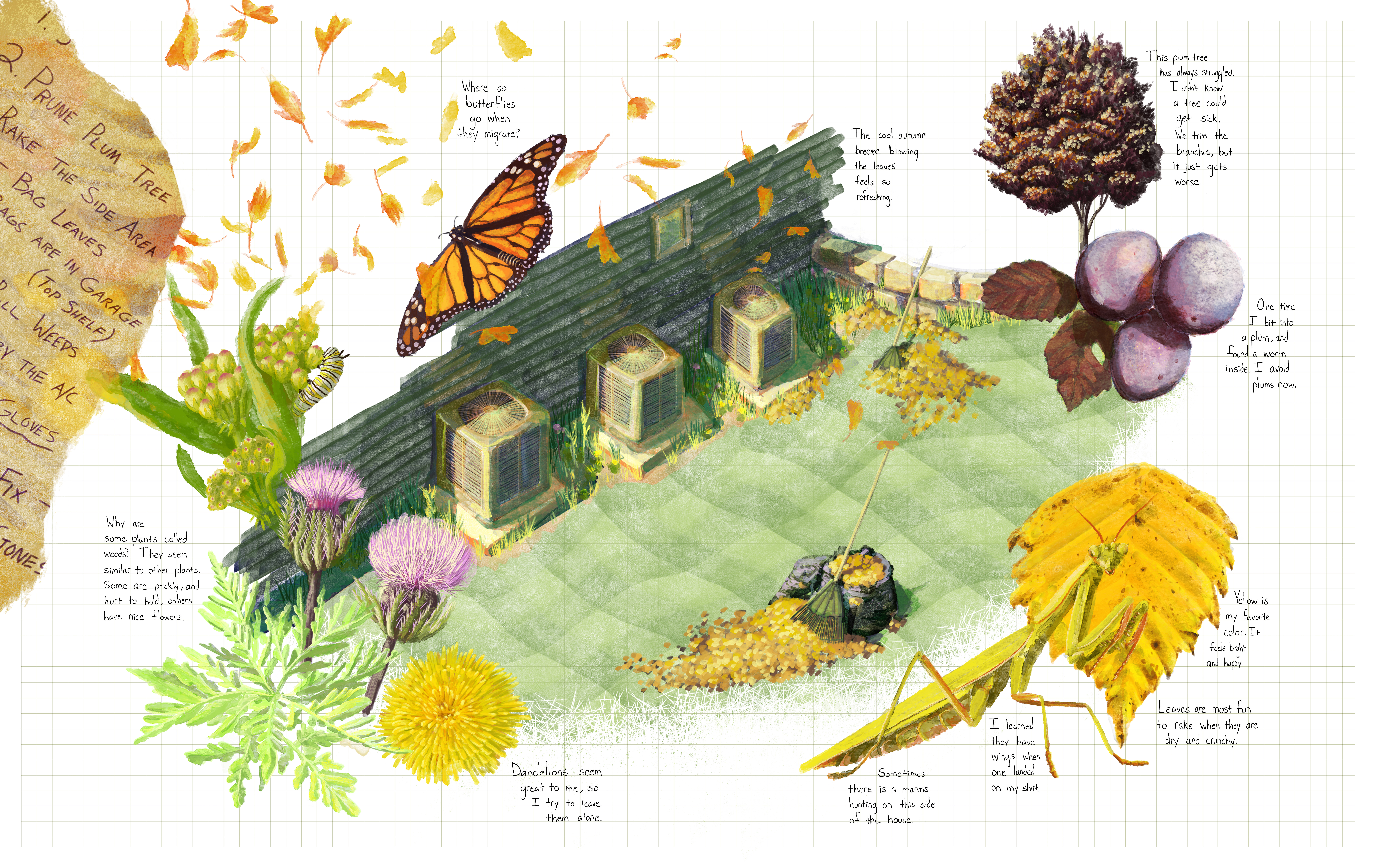
Vignette: HVAC Units
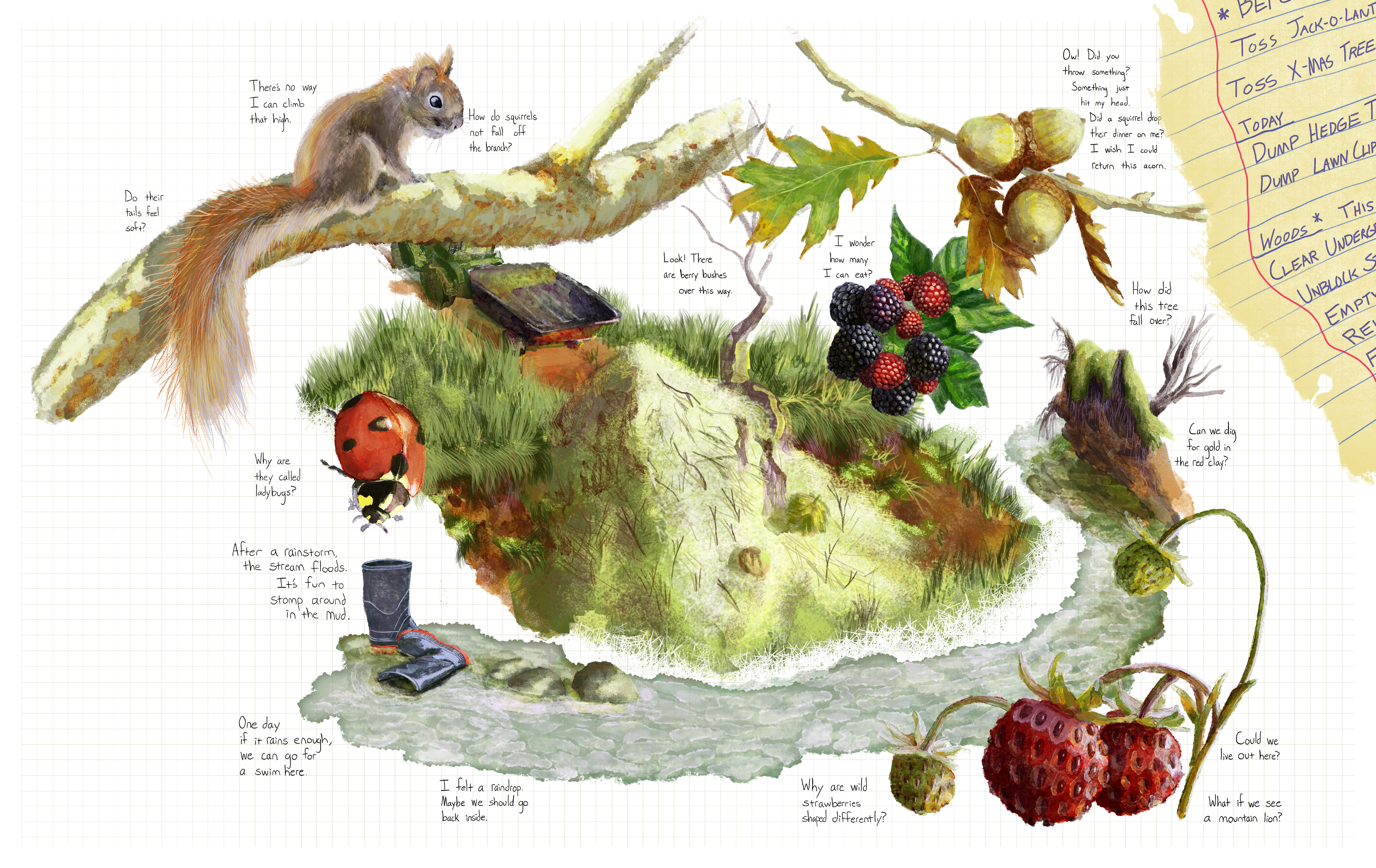 Vignette: Compost Pile
Vignette: Compost Pile
Aesthetics of Pests and Weeds
While some inhabitants can be harmful to humans, many which are designated “pests” and “weeds” are actually beneficial native species. Opening our minds to new types of lawns simultaneously entails a reconsideration for the type of image that constitutes a “dream” lawn.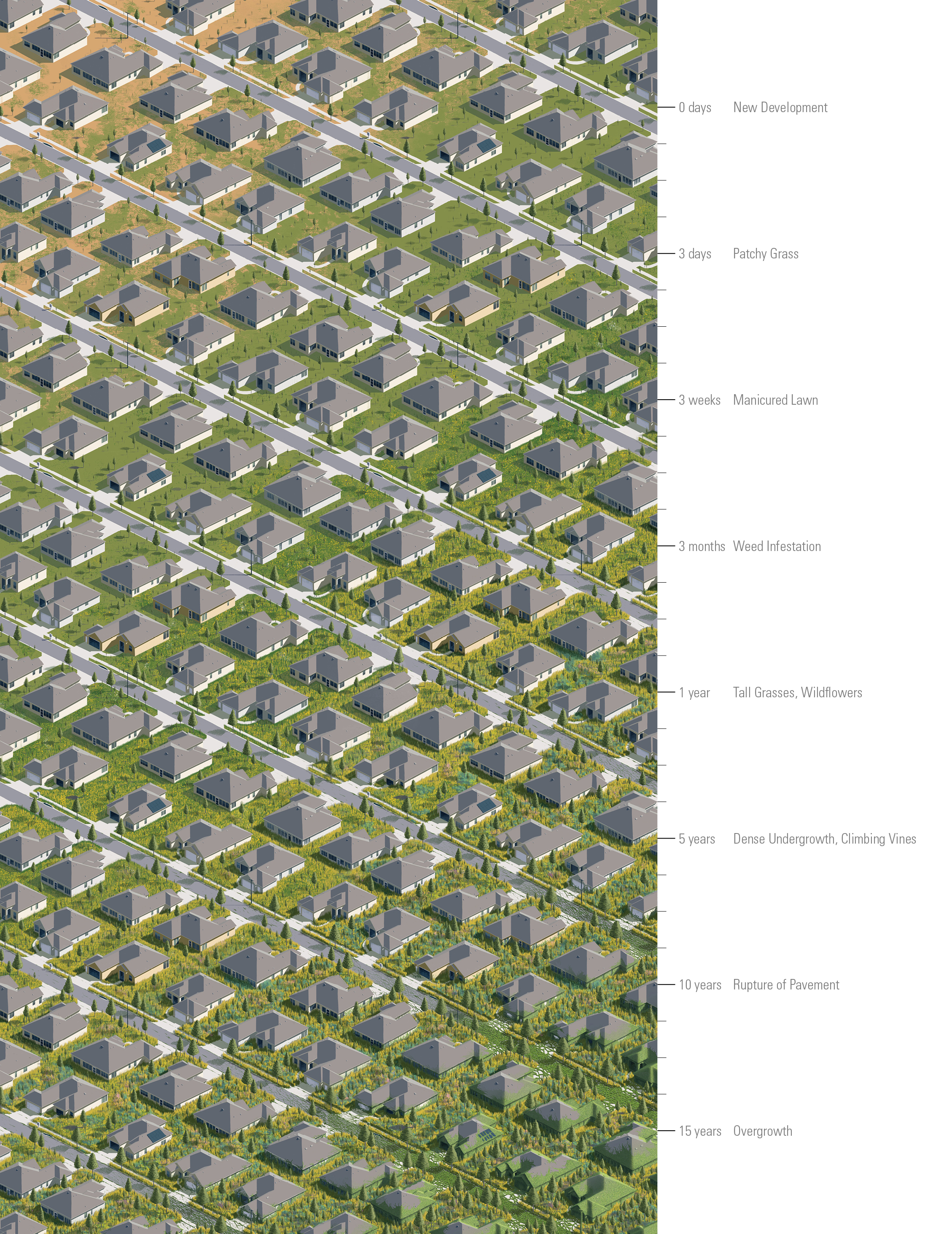 Illustrated Growth Studies:
Illustrated Growth Studies: Visualizing ecological succession against suburban sprawl.
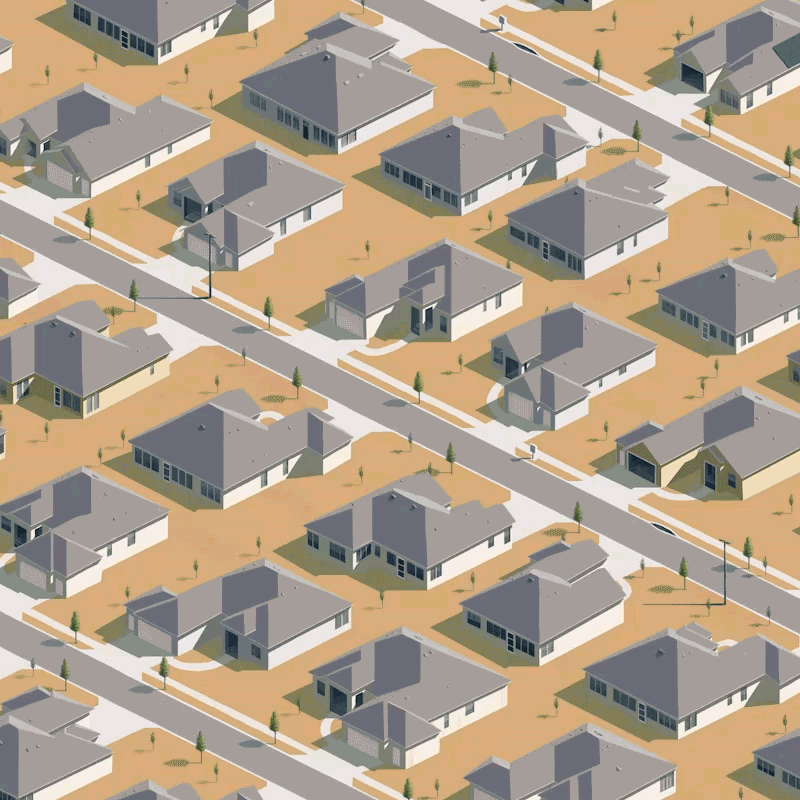
Lawn Growth Timelapse
 Sticker Sheet: What is your dream lawn?
By illustrating the full range of lawn-types from no lawn at all to a lawn far beyond overgrown, the book invites readers to consider for themselves what type of lawn and maintenance is their dream. Stickers are provided so that the preferred lawn can be populated with the various inhabitants who will call it home.
Sticker Sheet: What is your dream lawn?
By illustrating the full range of lawn-types from no lawn at all to a lawn far beyond overgrown, the book invites readers to consider for themselves what type of lawn and maintenance is their dream. Stickers are provided so that the preferred lawn can be populated with the various inhabitants who will call it home.
